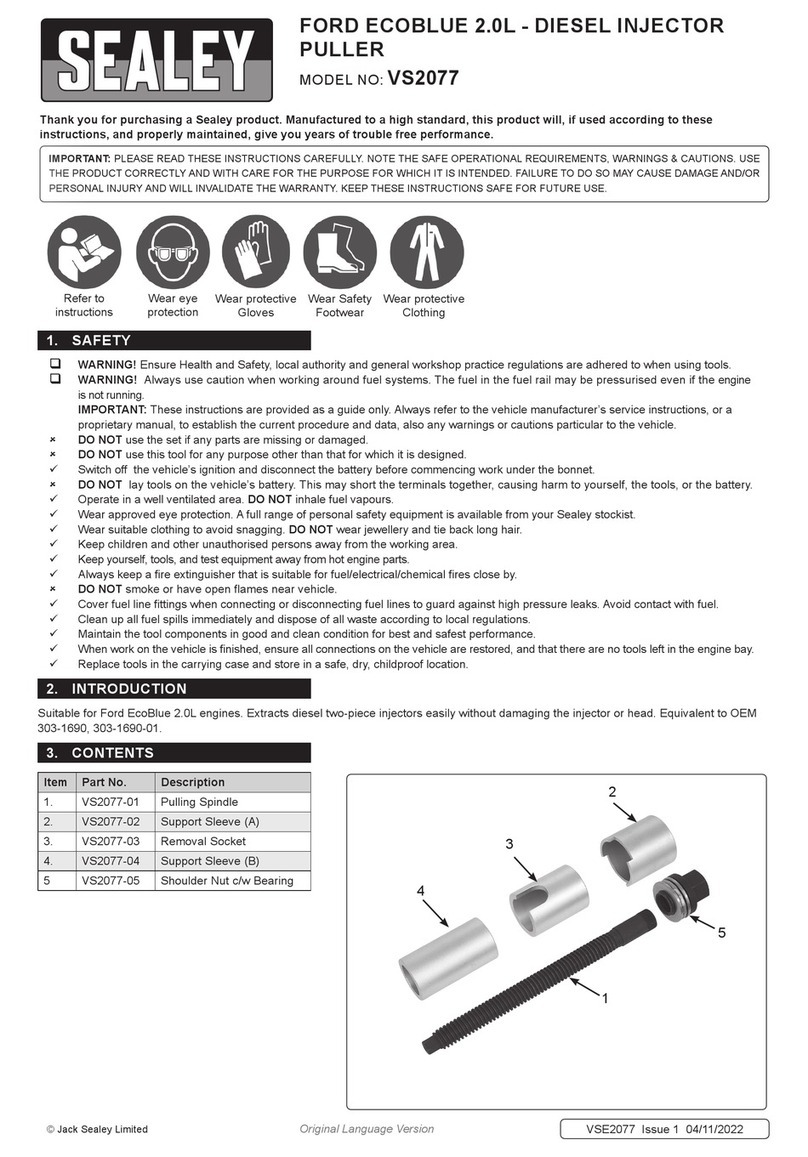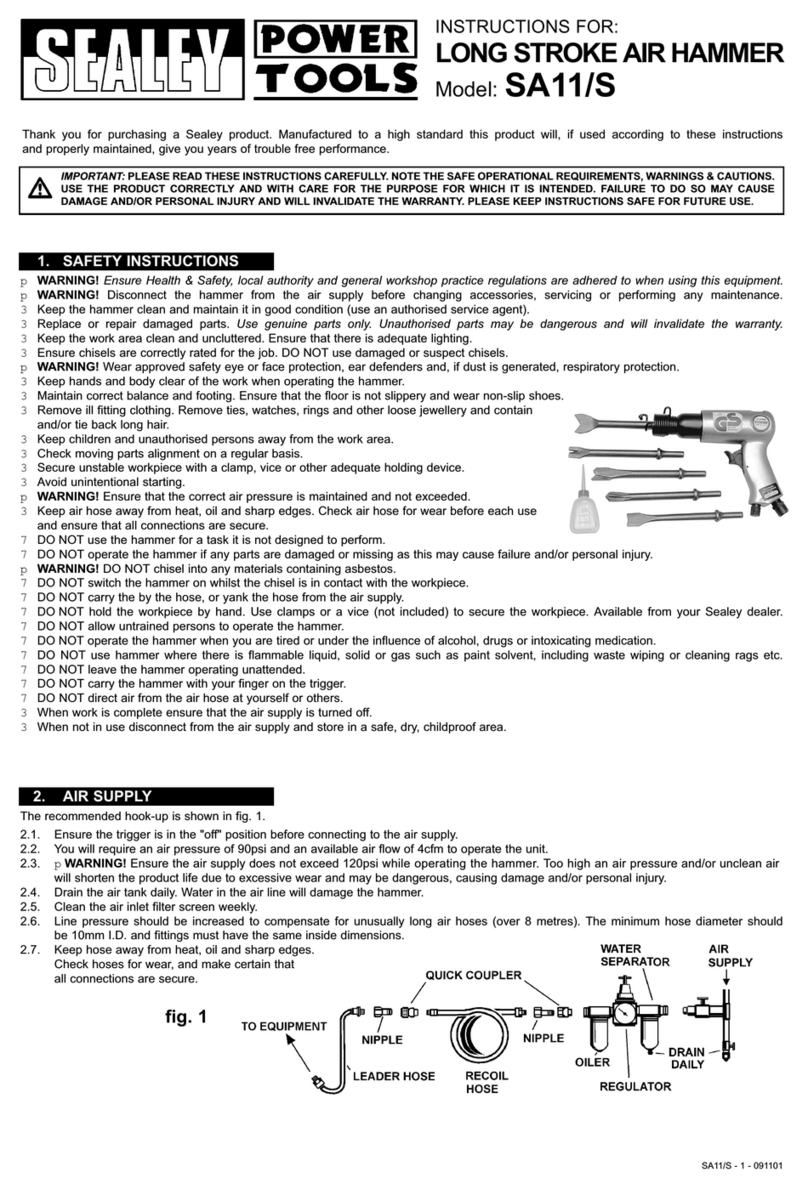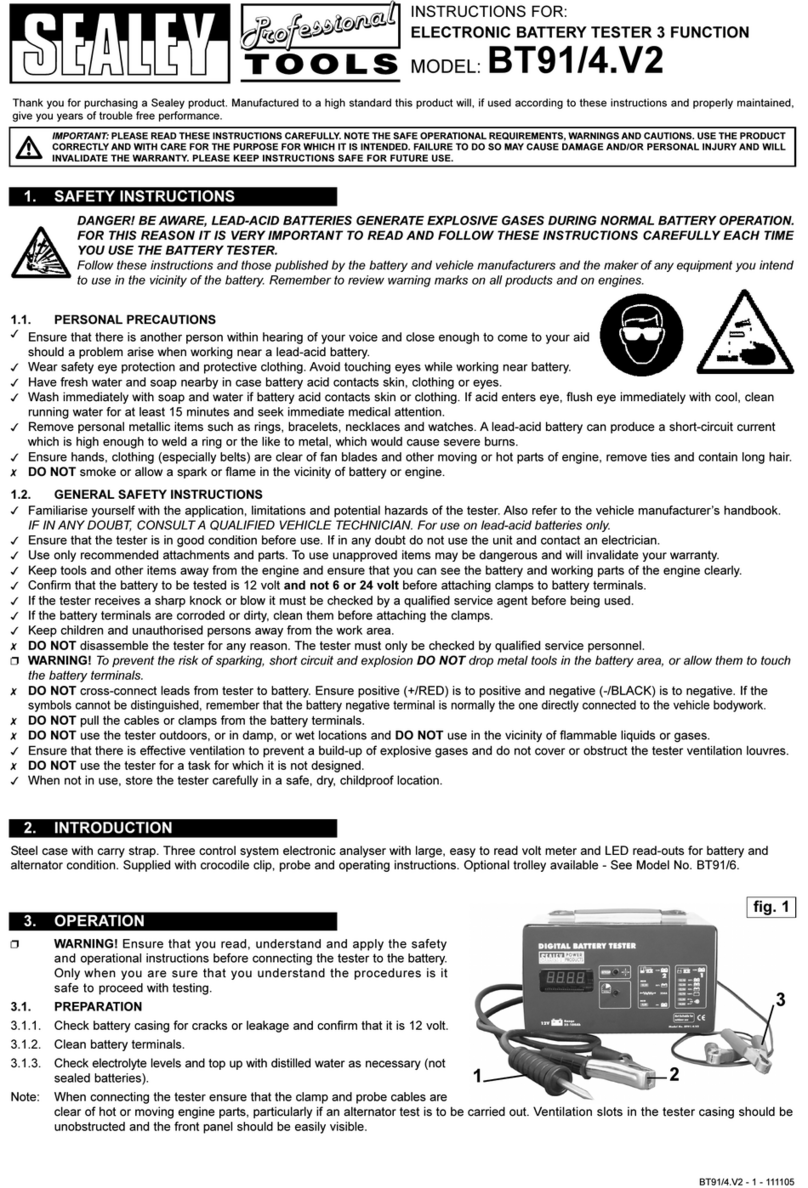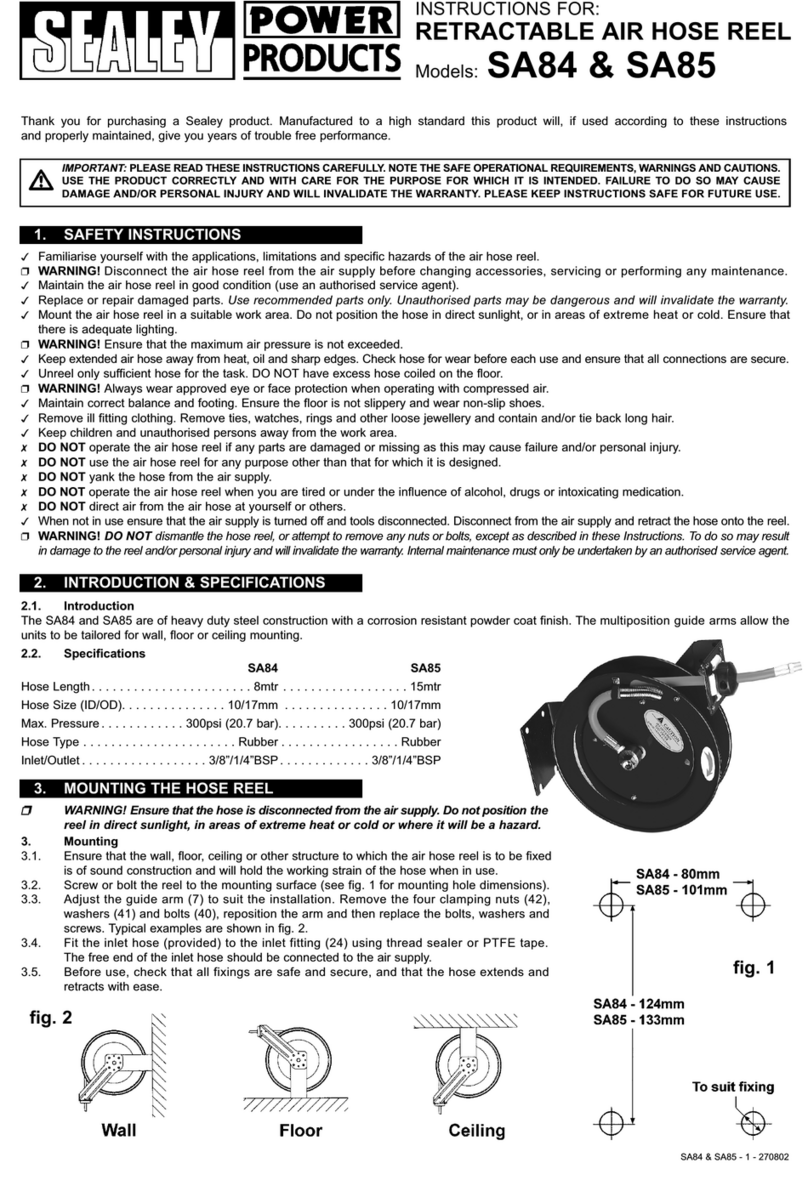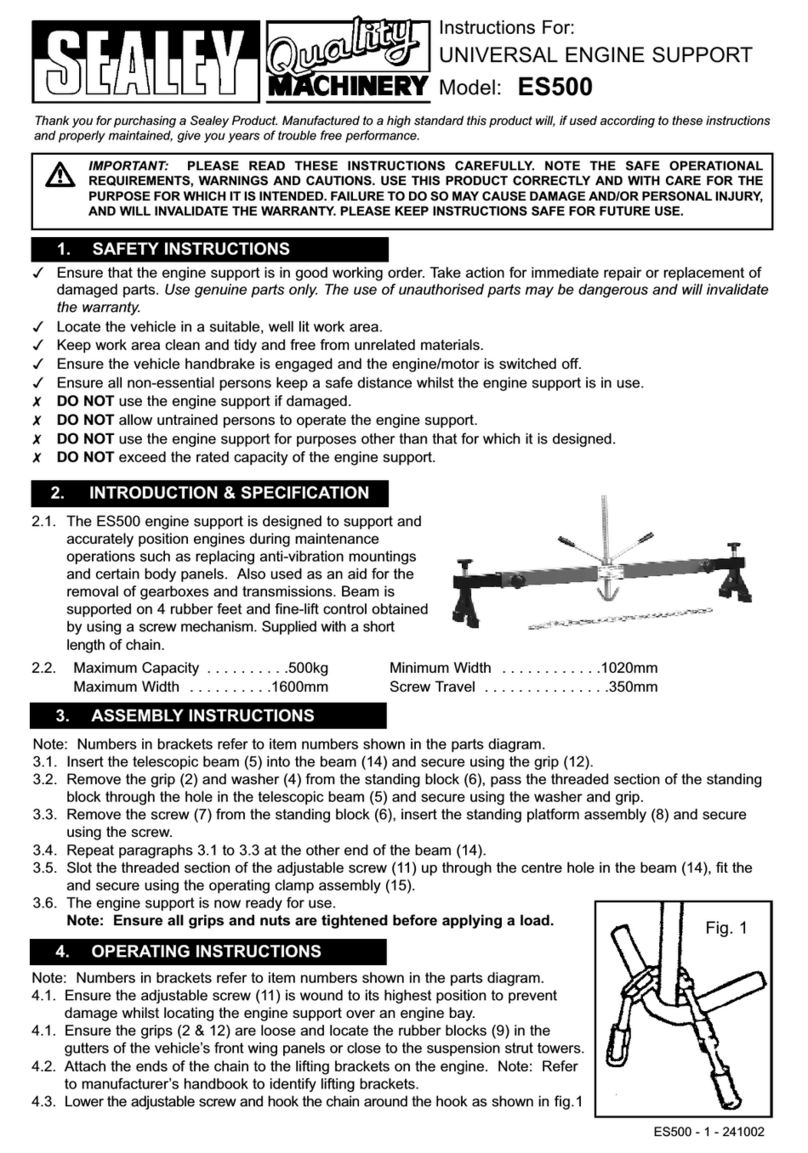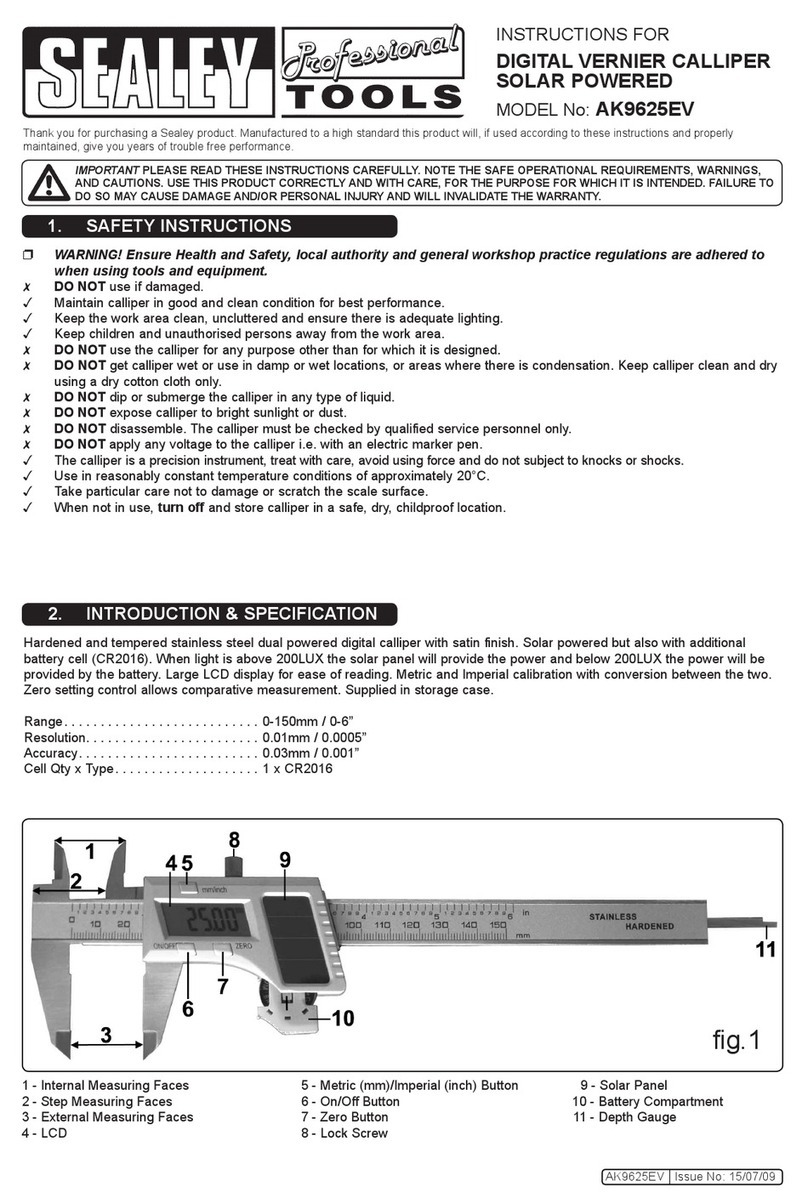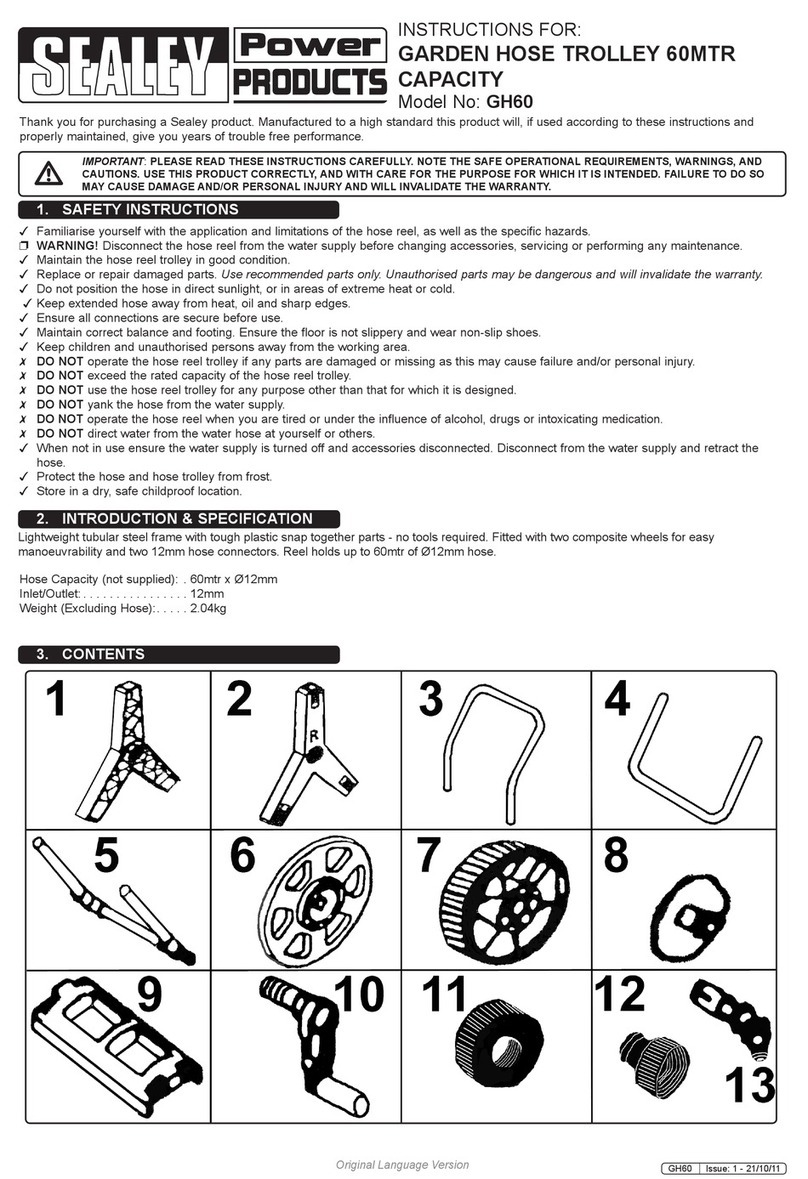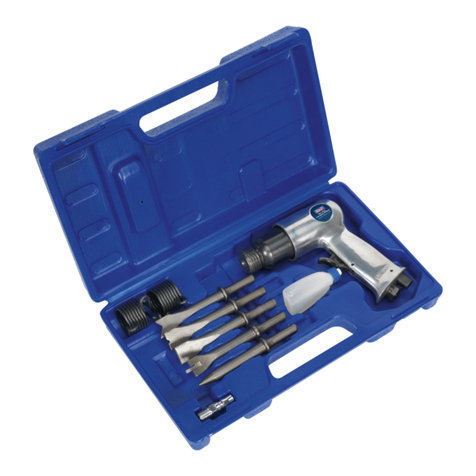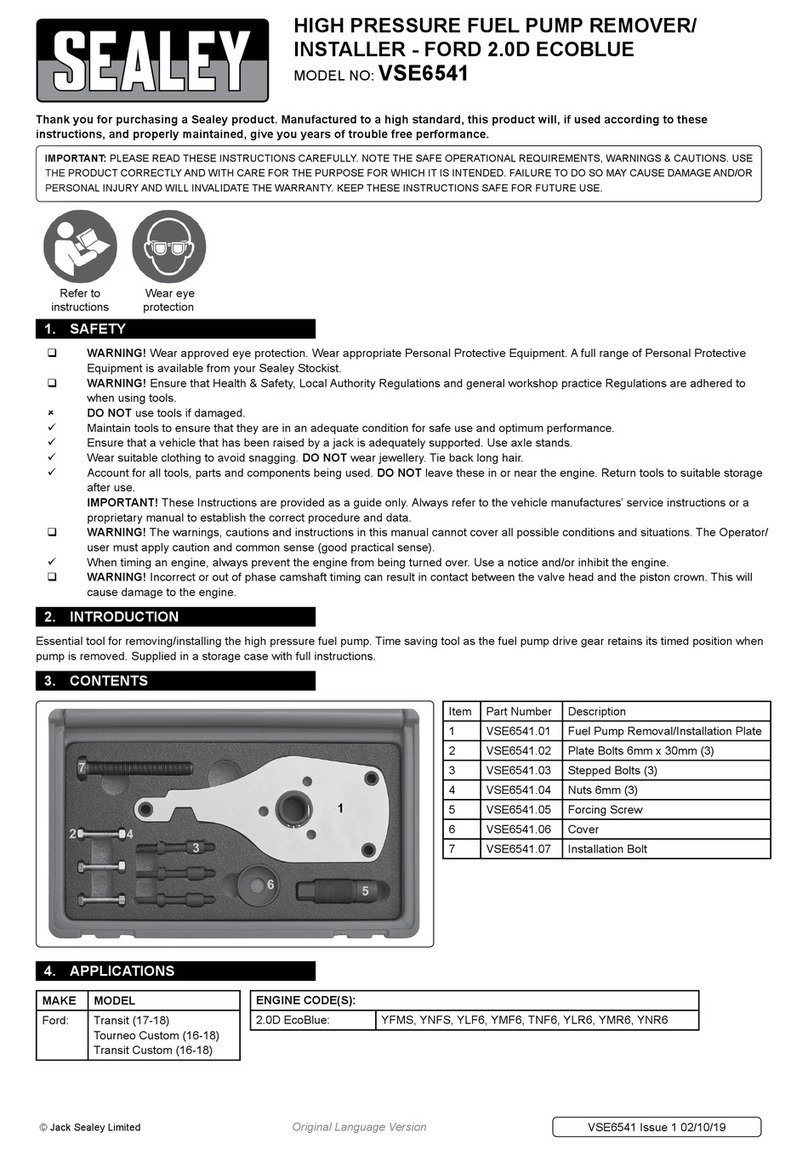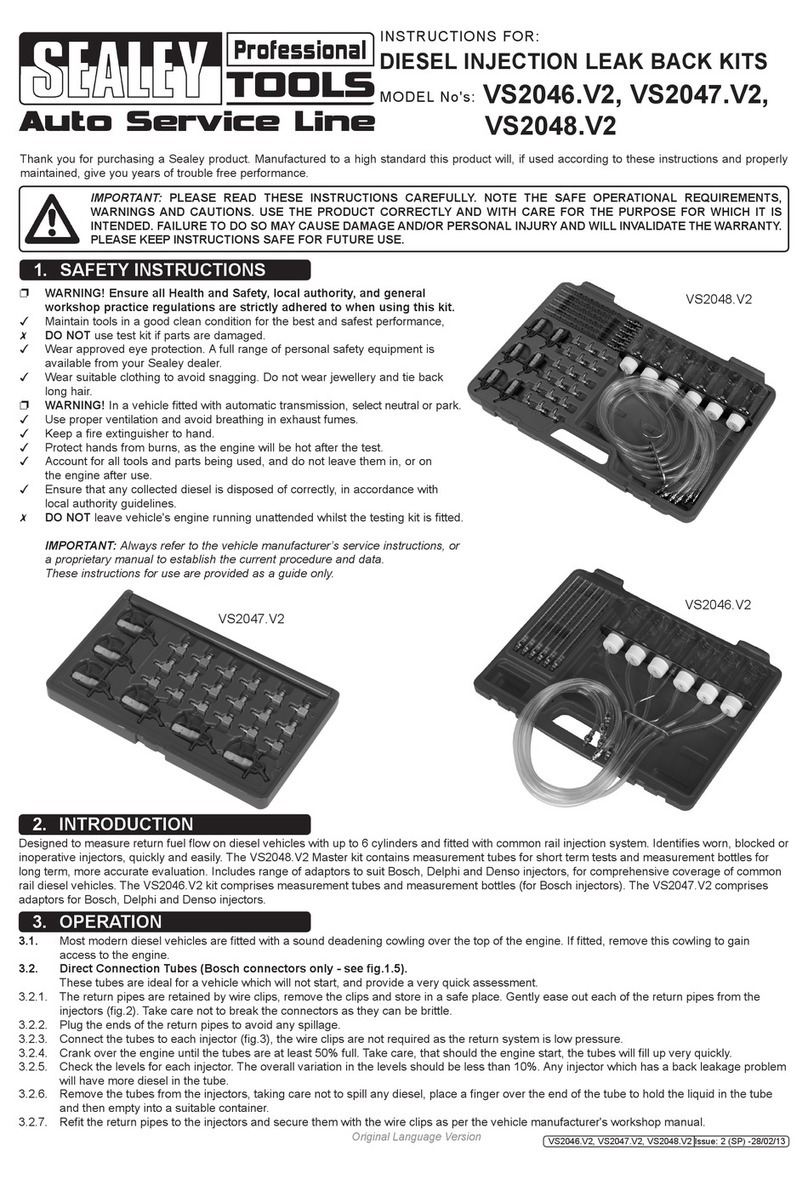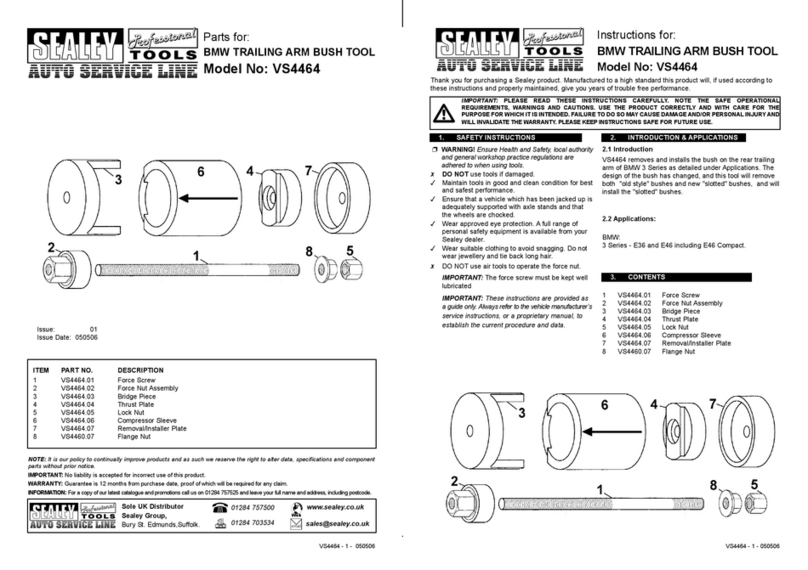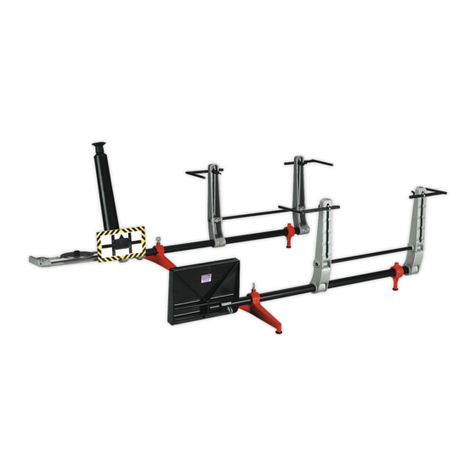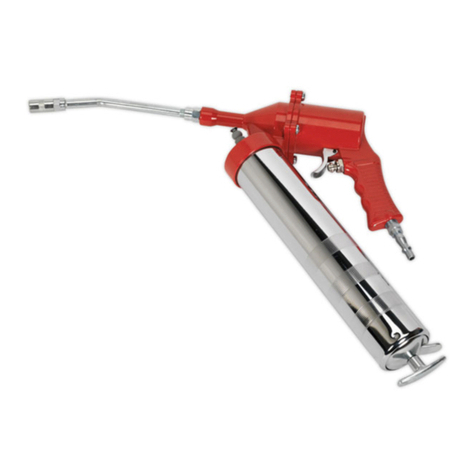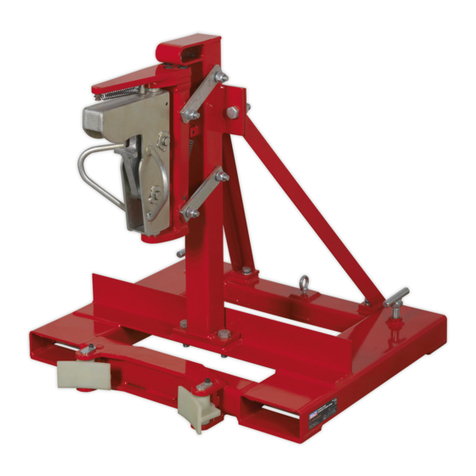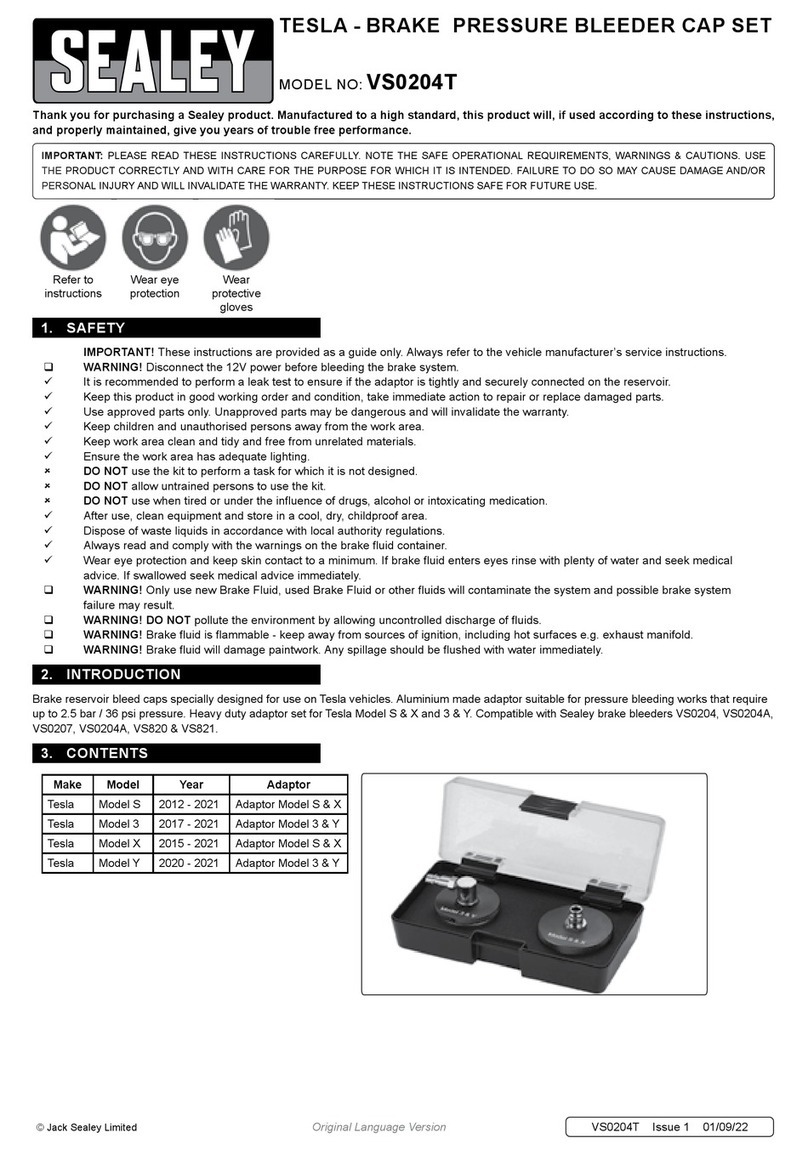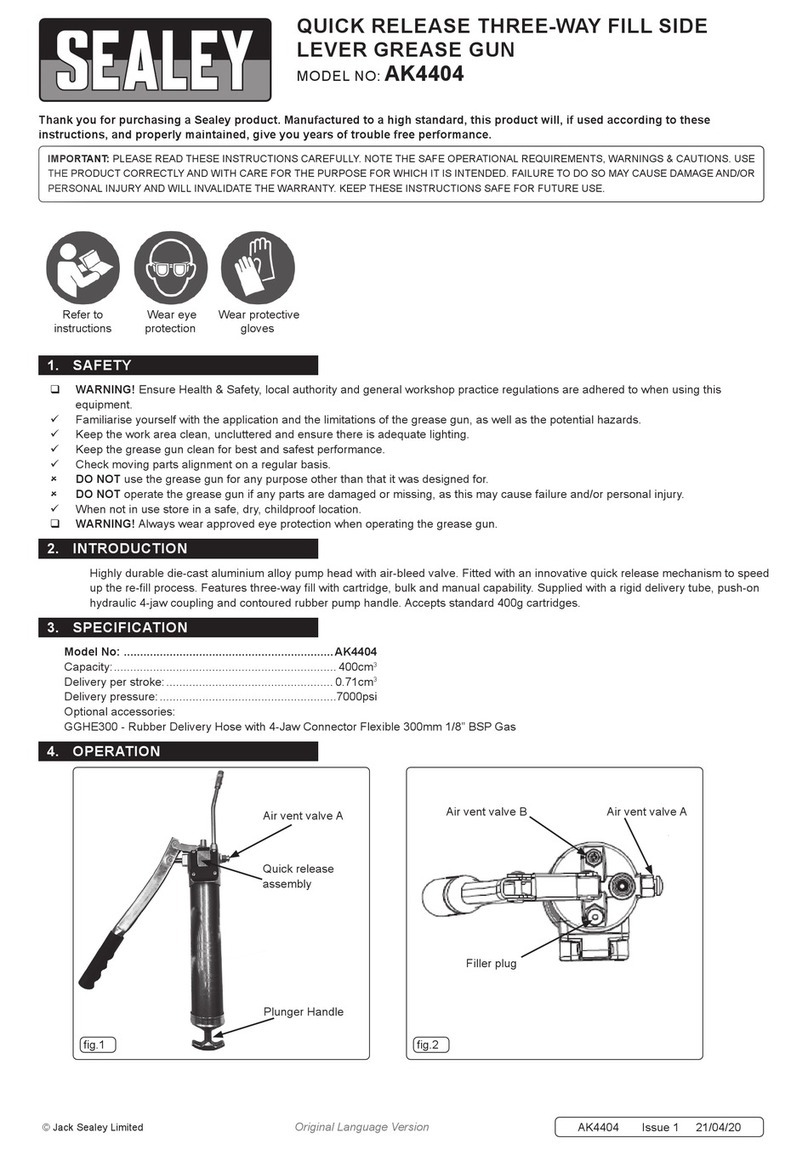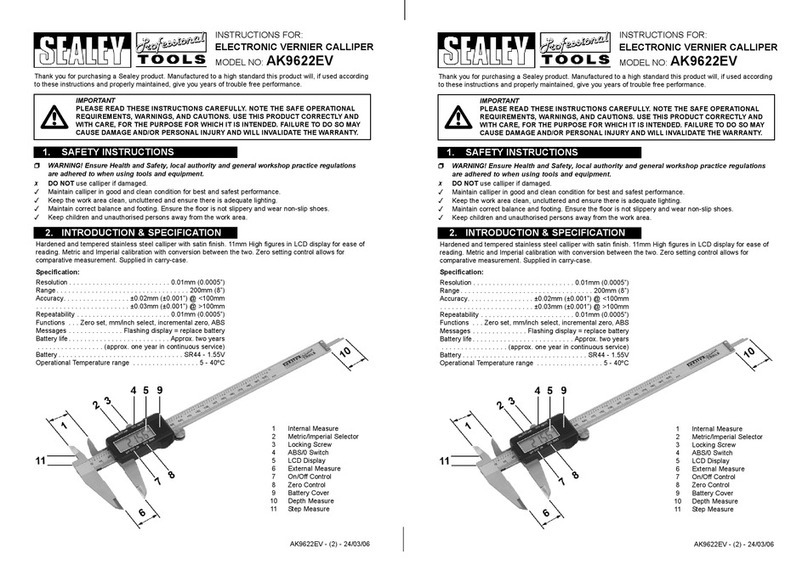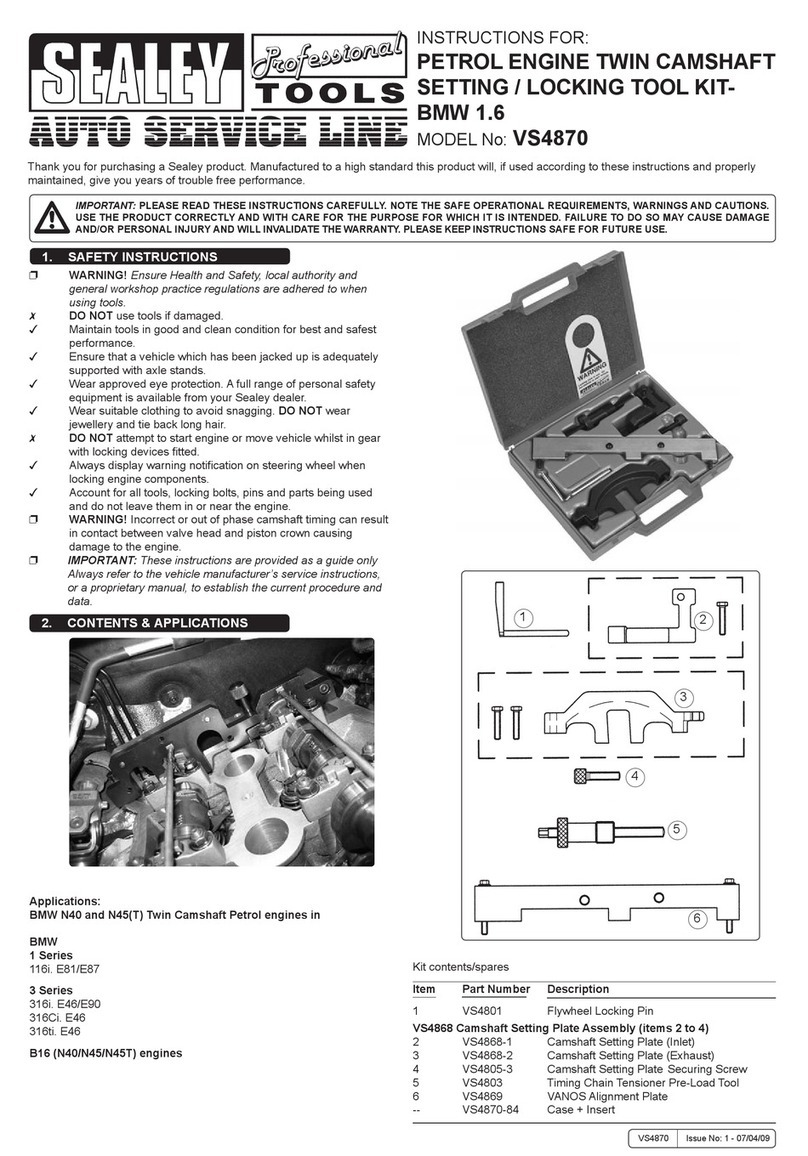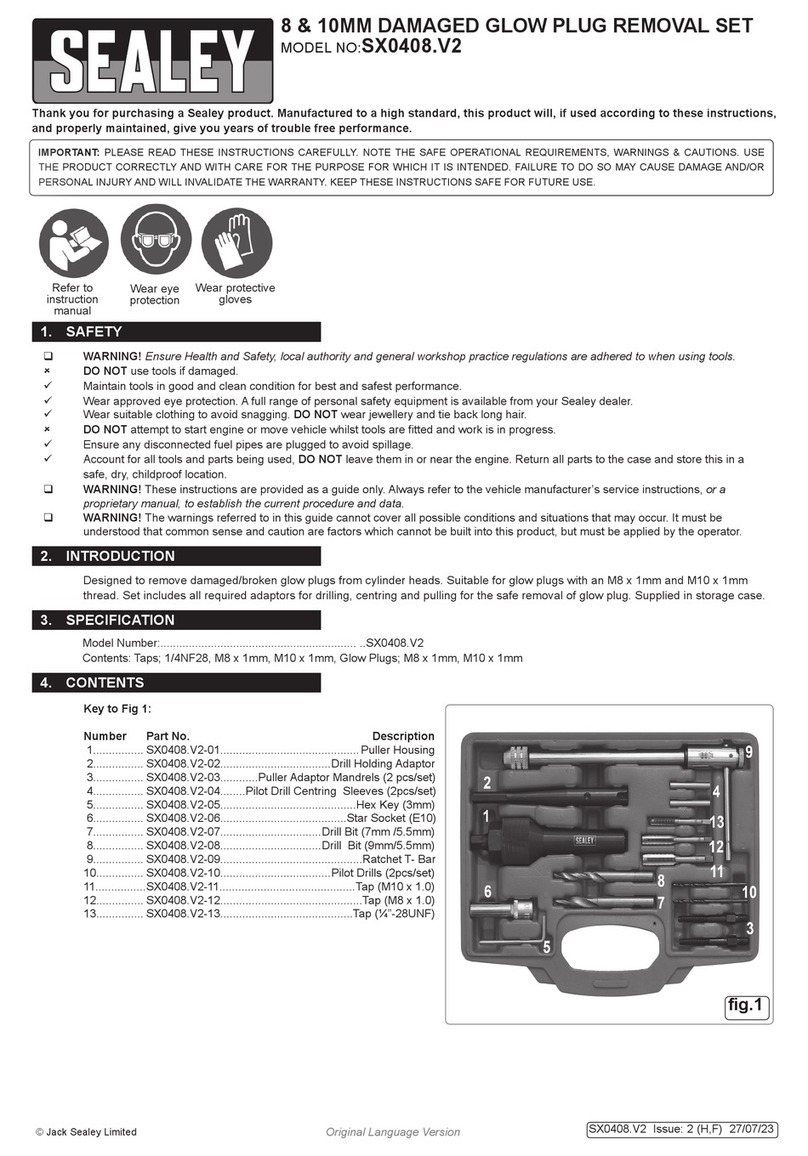
INSTRUCTIONS FOR:
FOUR-WHEEL LASER WHEEL ALIGNER
MODEL No: GA70.V2
Thank you for purchasing a Sealey product. Manufactured to a high standard this product will, if used according to these instructions
and properly maintained, give you years of trouble free performance.
1. SAFETY INSTRUCTIONS
IMPORTANT: PLEASE READ THESE INSTRUCTIONS CAREFULLY. NOTE THE SAFE OPERATIONAL REQUIREMENTS, WARNINGS & CAUTIONS.
USE THE PRODUCT CORRECTLY AND WITH CARE FOR THE PURPOSE FOR WHICH IT IS INTENDED. FAILURE TO DO SO MAY CAUSE
DAMAGE AND/OR PERSONAL INJURY AND WILL INVALIDATE THE WARRANTY. PLEASE KEEP INSTRUCTIONS SAFE FOR FUTURE USE.
1.1 GENERAL SAFETY
WARNING! Ensure Health & Safety, local authority, and general
workshop practice regulations are adhered to when using this
equipment.
Maintain the wheel aligner in good condition (use an
authorised service agent).
Replace or repair damaged parts. Use genuine parts only.
Non-authorised parts may be dangerous and will invalidate
the warranty.
Locate wheel aligner in a suitable working area, keep
area clean and tidy and free from unrelated materials.
WARNING! Use aligner on vehicles that are parked on level
and solid ground.
Keep the gauge clean to ensure accurate performance.
DO NOT use outside in damp or wet weather conditions.
DO NOT allow untrained persons to operate the aligner.
DO NOT leave the aligner unattended.
WARNING! When setting front end alignment on commercial
vehicles never make adjustments to drop arms or
interconnecting links. Doing so could result in serious tyre,
wheel and steering problems.
WARNING! The warnings, cautions and instructions
contained within this document cannot cover all possible
conditions and situations that may occur. It must be
understood that common sense and caution are factors
which cannot be built into this product, but must be
applied by the operator.
Any alignment changes deemed necessary as a result of
using this equipment must be made strictly in accordance
with the vehicle manufacturer’s recommendations.
1.2 LASER SAFETY
The GA70 utilises a Class II laser that emits low levels
of visible radiation (i.e. wavelengths between 400 and
700 nanometres) which are safe for the skin but not
inherently safe for the eyes. The Class II emission limit is set at the
maximum level for which eye protection is normally afforded by
natural aversion responses to bright light. Accidental eye exposure
is therefore normally safe, although the natural aversion response
can be overridden by deliberately staring into the beam, and can
also be influenced by the use of alcohol or drugs.
WARNING!DO NOT look or stare into the laser beam as
permanent eye damage could result.
DO NOT direct the laser beam at any person’s (or animal’s)
eyes as eye damage could result. If the beam is obstructed by
a person during use, release the contact switch immediately.
DO NOT use the equipment while under the influence of
alcohol, drugs or whilst on medication.
Be aware that reflections of the laser beam from mirrors or
other shiny surfaces can be as hazardous as direct eye
exposure.
2. INTRODUCTION
Fast, simple and accurate alignment of both front and rear wheels.
Optimises vehicle performance and set up after installation or
modification of steering or suspension components. Simple and fast
to use, it is ideal for the busy professional workshop and has a fast
return on investment - potentially adding value to every steering or
suspension job. This fully portable kit is also ideal for track-day set
up for the enthusiast. Works on practically all cars and light
commercials with rim diameters between 320mm and 540mm.
Supplied with steering wheel clamp, wheel turn plates and wheeled
storage rack. Supplied with comprehensive operating instructions.
3. CONTENTS
The GA70 kit consists of: Mobile storage unit (see above)
1. Laser Measuring Head x 2 3. Steering Wheel Clamp
2. Alignment Assembly Flags x 2 4. Dished Turning Plate x 2
5. Extension Bobbins x 6 6. 13" Wheel Spacers
Original Language Version
Original Language Version GA70.V2 Issue: 1- 19/02/14
©Jack Sealey Limited
